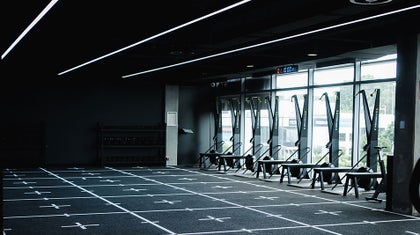What are compound exercises and where should you start?
by Douglas Ross on Sunday 14 July 2024
3 min read
Compound exercises are a clear winner for those looking to get the most bang for their buck and optimise their time in the gym. They’re the great multi-taskers of the fitness world – allowing you to work multiple muscle groups at once.
But how does that work? And how exactly are these multi-joint movements like squats, bench press and pull ups different from isolating individual muscle groups with exercises such as bicep curls, calf raises and leg extensions?
Understanding compound exercises
Compound exercises are multiple joint movements that fit roughly into five main categories. Each category targeting different areas of the body:
- Upper body push: Chest, shoulders and triceps as primary areas.
- Upper body pull: Back muscles, biceps, triceps and forearms.
- Lower body push: Quads, glutes and calves.
- Lower body pull: Hamstrings, glues and your lower back.
- Full body: This is an obvious one…get everything firing!
Because these are all multi-joint exercises that require you to keep your body stable while moving weight, you also get a good workout through your core with most compound exercises.
How are compound exercises different from isolation exercises?
If compound exercises are the perfect generalists, then isolation exercises are the precision tools that let you focus on one muscle group at a time. Isolation exercises such as flys, tricep extensions, and hamstring curls might not give you the general strength and cardiovascular boost that compound exercises do. But they’re fantastic for focusing on weaker muscles or imbalances. Find out more in our deep dive on isolation training.
Examples of compound exercises
Squats
The ultimate lower body push exercise – squats build lower body strength while demanding that you engage your core for stability and balance. There are endless variations to choose from, including basic bodyweight squats, goblet squats and barbell squats for different levels of progression.
Deadlifts
Deadlifts work a huge number of muscles, from your legs and core to your back, neck and forearms. They’re brilliant for building overall power and strength, and they’re satisfying too – because there’s nothing quite like lifting a heavy barbell off the floor. Just make sure you have the right technique and start off light.
Bench press
The bench press is a classic upper body exercise. It’s perfect for building strength in your chest, shoulders and triceps. Plus, it’s a great confidence booster – who doesn’t love seeing their bench numbers go up?
Pull-ups/chin-ups
Compound pull exercises like pull-ups and chin-ups are a true test of upper body strength. They work a variety of muscles, including your back, shoulders, triceps and biceps. If you’re not there yet, you can always start on the lat pulldown machine, and progress to pull ups and chin ups with resistance bands to assist.
Science-backed benefits of compound exercises
Beyond just working multiple muscle groups, compound movements and exercises also work wonders for your overall health and wellness. Engaging multiple muscle groups is shown to trigger a hormone response that comes with benefits for the mind and body. Your joints and bones benefit as well – with numerous studies showing that resistance training with compound exercises is important for musculoskeletal health.
Take the first step with Virgin Active
Feeling ready to take the leap? A Personal Trainer at Virgin Active is a great way to get started in resistance training. If you live or work near our Virgin Active Pitt Street club, you can even join Lift Club! Lift Club is a Virgin Active community committed to strength training – perfect for learning together!
Related articles
Move
4 min read
Why Grid Training should be part of your weekly HIIT workouts
Nourish
4 min read
7 healthy shots you need to try
Unwind
3 min read
Are you experiencing mental or physical fatigue?
Enjoying our blog?
Sign up to our newsletter to get updates on training, healthy living, news and events.






